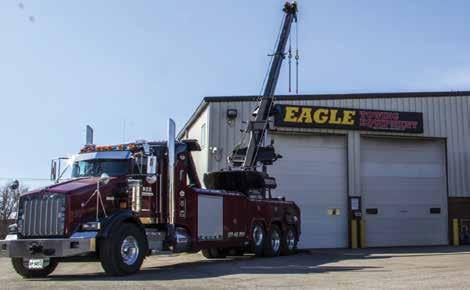
13 minute read
IN THE HEADLIGHTS
Much like any industry, tow truck drivers often face backlash for their line of work. From a distrust of the system to an accusatory approach that some take towards the person who just rescued their car off the side of the road, people in the towing industry don’t have it easy. But companies like Eagle Towing are working to make things better. Jack Poladian, operations manager at Eagle Towing combats misconceptions created by “a few bad apples” by holding himself and his staff to a higher standard from what they know.
“Many people have misconceptions about the towing industry due to a few bad apples that are ruining things for the good ones,” Jack Poladian, Operations Manager at Eagle Towing told Collision Repair. “But we hold ourselves to a higher standard from what we know.”
Poladian and his family’s history in the industry represents a side of towing that many choose not to see. Launching in 1978, Eagle Towing - a tow truck distributing company - housed only one truck and one gas station.
Now in 2019, the company operates out of 15,000 sq. ft. facility, keeping their growing crowd of customers happy and drivers safe on the roads. It is the Poladian’s passion for their work that keeps them afloat.
“It all comes back to true dedication. My family has put their heart, soul, and every waking minute into this company.” Poladian said.
“Eagle Towing isn’t treated as a business, it’s treated as a lifeline and every moment Simon and Victor [co-owners] are thinking about their next move and how to support their customers.”
Not only is Eagle Towing changing the way people see tow truck operators as business professionals, but as emergency services. Poladian reminded Collision Repair that civilians must pull over when they see a tow truck operator heading towards a wreck, considering the high-risk of car crash victims waiting on the side of the road for help.
“At the end of the day, everyone has a family and people risk their lives to help others in a jam,” said Poladian. “There’s nowhere in the rule books that says “you have to operate a tow truck,” these guys choose to come out and help no matter rain, sleet, hail, snow, or cars on fire. We are on-site doing whatever they can to help. “
When it comes to Eagle Towing’s future as a business and as a key asset to the industry in Ontario, Poladian says Eagle Towing is only going up.
Eagle Towing is in Cambridge, Ontario.
CAA CALLS ON ONTARIO
To commemorate the province’s fourth annual Tow Safety Week, CAA South Central Ontario (CAA SCO) issued a call for the Ontario
government to prioritize towing industry regulations. CAA SCO issued an online statement calling for provincial regulations in the towing indusCAA SCO is calling for towing regulation. try. The company calls the towing industry “problematic” due to long wait times, impolite interactions between towing operators and clients, and high towing bills. CAA SCO maintains that provincial regulation remains an essential step in protecting the province’s drivers. It hopes the regulations would ensure Ontario’s motorists have certainty when it comes to towing services, regardless of when or where the province’s drivers require support. The company’s call-to-action echoes London, Ontario’s decision to craft a bylaw regulating the local tow truck industry, specifically “chaser” tow trucks.
CAA SCO also recognizes that new regulations would likely improve any strained relationships between consumers and tow truck operators. The company said it hopes regulations will help the public gain “respect for the men and women who work hard to provide an important service on our roads.”
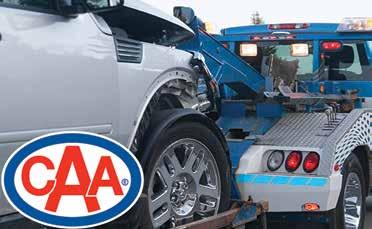
In early October Toronto launched a sixweek towing blitz in the city’s downtown core, targeting vehicles that are illegally blocking lanes during rush hours.
On October 4, Toronto mayor John Tory announced that the city will be launching a towing pilot project to remove illegally parked vehicles from Queen Street. The project began October 7 and was scheduled to continue for six-to-eight weeks.
During those weeks, Toronto tow trucks will patrol a 13-kilometre stretch, removing illegally parked vehicles between the Fallingbrook Road and Queen Street East intersection all the way through Roncesvalles Avenue and Queen Street West.
The city has dedicated about $80,000 in funds the for the pilot project. Similar towing endeavours have launched in the past, but Tory has maintained that this project is different, as vehicles will be towed to spots on nearby sidestreets rather than an impound lot. That way, tow trucks will have can get back onto Queen Street to continue towing in a more timely matter.
If someone suspects their vehicle has been towed, they are advised to call the Toronto police non-emergency line, where they will be told the location of their vehicle. While the towing fee will be waived for Toronto’s offenders, drivers will be issued a $150 no-stopping ticket.
“I think everybody in the city has felt the frustration of sitting behind a vehicle with its flashers on,” said Tory. “Traffic congestion that is caused by illegally parked vehicles is dangerous and frustrating.”
In 2018, officials said that nearly 11,000 no-stopping tickets were issued on Queen Street during rush hours, forcing 2,400 vehicles to be towed.
Tory said the city is targeting Queen Street based on its public transit accessibility; illegally parked cars and trucks have been hindering public transit vehicles, delaying
Toronto mayor John Tory launched a towing blitz on the city’s downtown core in early Oct.
them from completing scheduled routes in a timely manner.
The city has also installed Bluetooth monitoring software on the street to measure traffic flow and determine the project’s overall effeciency. If successful, the project could become a permanent practice.
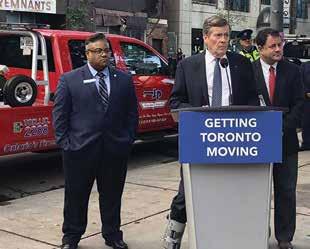
MAINTENANCE MERGER
Two Alberta businesses—a towing company and a landscape maintenance company—announced a merger in mid-October, forming one of Canada’s largest municipal external service providers.
The merger is between City Wide Towing and Recovery Service, a Calgary, Alta.-based towing service, and ULS Maintenance and Landscaping in Rocky View, Alta. ULS provides snow and ice management, garbage collection, landscape maintenance and other related services to municipal and commercial clients across Western Canada.
Signal Hill Equity Partners provided growth capital for the transaction. According to the companies, the new partnership will form a market leader in exterior services, with more than 500 employees and five operational hubs in Alberta and Saskatchewan. The new company will serve more than 30 towns, cities and
City Wide Towing and ULS Maintenance have announced a merger, forming one of Canada;s largest municipal service providers.
municipalities. The two companies said the transaction creates Western Canada’s largest diversified municipal external services company.
“We are looking forward to working with ULS,” said Eytan Broder, CEO of City Wide Towing. “By partnering with Western Canada’s largest landscape maintenance and snow removal company, we are executing on our strategy of building a diversified national municipal and commercial services provider.”
City Wide Towing has provided towing and recovery services across Alberta since 1963. Its services include towing, equipment transportation, boosting, lockouts, fuel delivery, tire changes and other specialty services in the surrounding areas. According to the company, it operates the largest towing and recovery fleet in Western Canada, providing services to various auto clubs, insurance companies, equipment rental companies, auto dealerships and municipalities.
Established in 1989, ULS has provided year-round services in landscape design, construction, maintenance, and snow and ice management to clients in Alberta and Saskatchewan.

Towing professionals might find dealing with millenials a little bit more difficult--and interactions with them a little more frequent--since the legalization of marijuana. According to a new study from the CAA, young Canadians frequently engage in dangerous behaviour involving the use of marijuana and automobiles. The findings are based on a poll of 1,517 Canadians. A probability sample of the same size would yield a margin of error of +/-2.5%, 19 times out of 20.
“The study’s findings regarding attitudes and perceptions tells us there is a need for more education,” says Jeff Walker, CAA chief strategy officer. “If you plan to consume cannabis, don’t drive. Make an alternate arrangement just like you would for drinking.”
According to a CAA study, a quarter of Canadians between the ages of 18 and 35 admit to having driven while under the intoxicating effects of marijuana, or driving in a car with someone they knew to be high.
Interestingly enough, more than 85 percent of young Canadians also accept that it is important to make plans to avoid driving after consuming alcohol. Just 70 percent, view avoiding driving while under the influence of marijuana is of less importance than while under the influence of alcohol.
“Cannabis may impair your driving differently than alcohol, but the effect is the
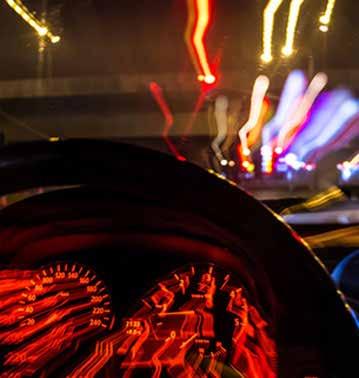
PETAL TO THE METAL
Young people driving high
same – decreased reaction times that can lead to collisions and even fatalities,” says Walker.
Medical professionals agree.
In fact, the U.S. National Institute on Drug Abuse says that the use of marijuana can cause altered perceptions of colours, time, impairments to co-ordination, thoughprocessing, memory processing, and mood control. It can also cause hallucinations, delusions and psychosis.
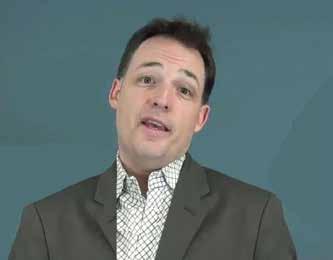
CAA chief strategy officer Jeff Walker. “The study’s findings regarding attitudes and perceptions tells us there is a need for more education.” Marijuana can be imbibed in several ways, not all of which leave behind the tell-tale smell of the plant’s smoke. Vapes, enemas, baked goods and suppositories can all be used to get high discretely.
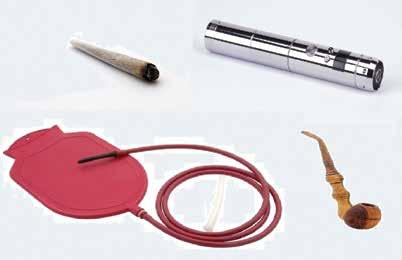
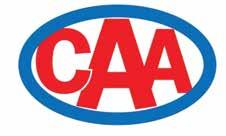
According to a new study from the CAA, young Canadians frequently engage in dangerous behaviour involving the use of marijuana and automobiles. The findings are based on a poll of 1,517 Canadians. A probability sample of the same size would yield a margin of error of +/-2.5%, 19 times out of 20.
DEALING WITH HIGH CLIENTS
According to the Canadian Criminal Code, driving while impaired by drugs—including marijuana—is prohibited. Penalties range from fines for first-time offenders, to life imprisonment in situations that lead to a death.
The severity of a punishment is based on the amount of THC—the psycoactive chemical found in marijuana. Drivers with between two and five nanograms of THC per ml of blood face less serious punishments than those found to have more than five nanograms per mililitre of blood.
While users may believe themselves to be harmless and seek to convince members of the auto aftermarket not to report them to the police, towing professionals have a responsibility to act.
Those who suspect clients of driving high should report the matter to police.
“Impaired driving is the leading criminal cause of death and injury in Canada,” the Department of Justice writes. “In 2017, there were more than 69,000 impaired driving incidents reported by the police, including almost 3,500 drug-impaired driving incidents.”
PICKING OUT THE POT HEADS
Identifying them may not be easy, even for roadside responders.
In the past, most people smoked marijuana in rolled cigarettes known to users as joints or blunts. The smoke left behind a distinctive smell, often compared to that of a skunk.
Modern alternatives to smoking marijuana, like vaping them through specialized devices, do not necessarily leave the tell-tale scent. The active ingredients can also be baked into food and even taken as a suppository or through an enema.
There are other clues, however, that may allow roadside responders to identify people who have been driving high.
The chemicals found in THC often leave the whites of users’ eyes looking red, however, the substance is imbibed. Those under the affects of marijuana frequently laugh at inane events and often trail off mid-sentence during conversations.
Users may also make use of an insider language in order to determine whether a roadside responder is involved in marijuana culture, and, thus, unlikely to report them for driving high.
Within marijuana culture and, in some cases, more broadly, marijuana is known by a number of insider names. These include: 420, alfalfa, amnesia, astroturf, Aunt Mary, blaze, bud, chronic, Devil’s lettuce, ganja, weed, pot and Mary-Jane.
TOW YEAH!
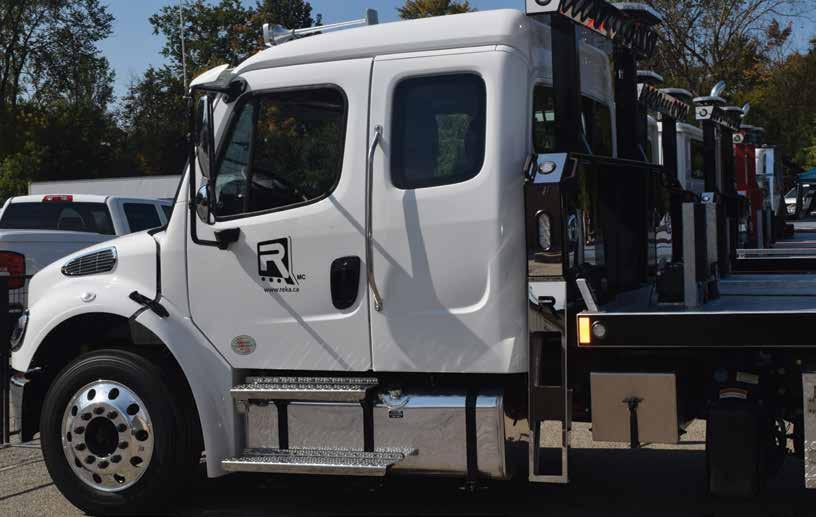
The Provincial Towing Association of Ontario’s 2019 Tow Show was a weekend to remember!
BY GIDEON SCANLON
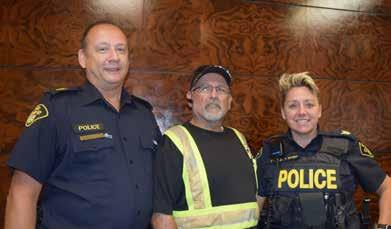
Tow truck operators from across Ontario gathered in Kitchener for a weekend of networking, training and all-around fun!
In September, the Provincial Towing Association of Ontario held its 2019 Tow Show in Kitchener, Ontario.
Friday, September 20, 2019 kicked off in the morning with two training sessions on dangerous goods transportation and OPP traffic management. An open panel was then held for discussion with industry veterans from the OPP, MTO, CAA and PTAO itself.
A sneak peek into the all-new show floor opened up in the evening, before the PTAO’s Annual General Meeting held the election for its board of directors. A welcome reception then provided towing pros not only with a chance to dine but also with the opportunity to network with others and chat about the day’s proceedings.
Finally, the end of Friday night was reserved for the ‘Let the Light Shine’ event, which honoured those in the towing industry that had been injured or killed while at work. Tow operators and their families held a moment of silence to reflect before trucks from all over the province flashed their lights on queue and lit up the night sky.
Saturday began with registration for the day’s championship competition, designed to see who Ontario’s best operator is. The vendor display was now fully open to the public, with companies registering to display their products outside in further opportunities to network. Weekend attendees then spent the afternoon meeting with the stars of reality show ‘Heavy Rescue 401,’ for autographs, pictures and posters. Saturday evening winded down with cocktails and dinner in a semi-formal event. That is when PTAO held the second annual ‘Heroes of the Industry’ awards, where recipients were rewarded in front of the crowd for their heroic work in the line of duty.
Along with the weekend event, PTAO also released a list of changes members would be seeing to the board’s leadership after asking what they would like to see. First and foremost, Stephen Ashworth was hired as CEO of the organization, bringing with him years of experience in non-profit corners. Moving forward, a new electoral system has been put in place to allow members to be able to pick qualified candidates and support them through the nomination process.
The board itself also underwent compliance training to better cooperate with members and help the group thrive. It also announced a new logo and slogan to go with it.
The change in venue also comes after member consideration. The new location at the Bingeman’s grounds is a centrally located and larger space — by about 25 percent — than those that hosted previous years. It also comes with side attractions on-site, including camping, paintball, and other play areas for any kids in attendance.
All in all, PTAO’s efforts can be summed up in their new slogan, to “Engage, Evolve, Elevate.”
ALL PURPOSE HEAVY DUTY
CLEANER
MADE IN CANADA Cleaner

• Formulated to loosen and lift dirt & tough grease from the surface • Heavy-duty solvent-free, Bleach-free Degreaser • VOC compliant
Deodorizer
• Deodorizes areas that are hard to keep fresh smelling • Destroy microorganisms that cause odours
Kills Mold
• Inhibits growth of mold and mildew • Instantly remove mold & mildew stains
Disinfectant
• Based on laboratory testing Spray X Disinfectant demonstrated effectiveness against SARS Associated
Coronavirus & Human Coronavirus in 2 minutes • 30 Kill Claims-higher than any leading competitors

Applications:
• Equipment & Tools • Siding, floors & walls • Bumpers • Door panels • Fiberglass • Bathrooms • Garbage storage areas, empty garbage bins • Work bench, Chairs • Mold & Mildew • Cars, Trucks, SUV’s, Van’s, RV's • Trailers, Counters & More









